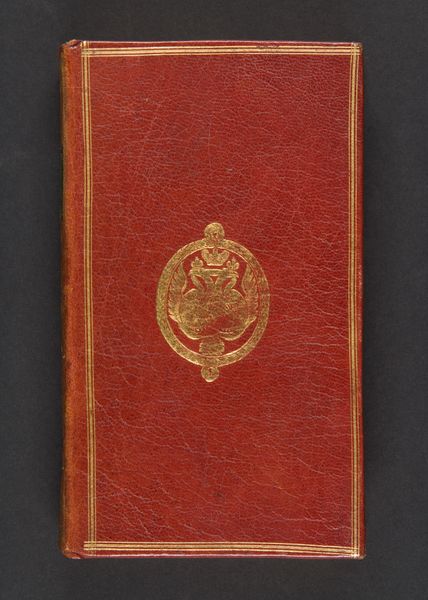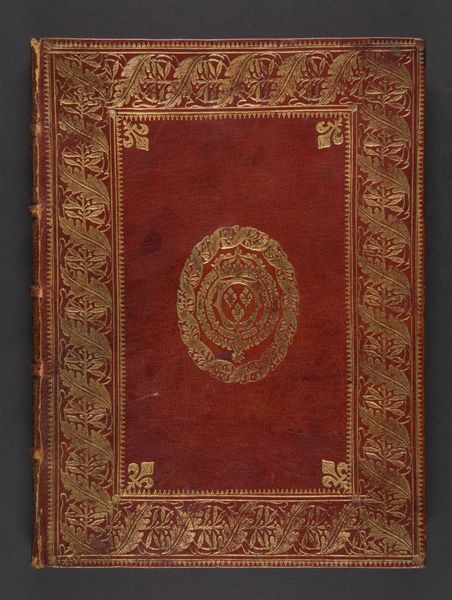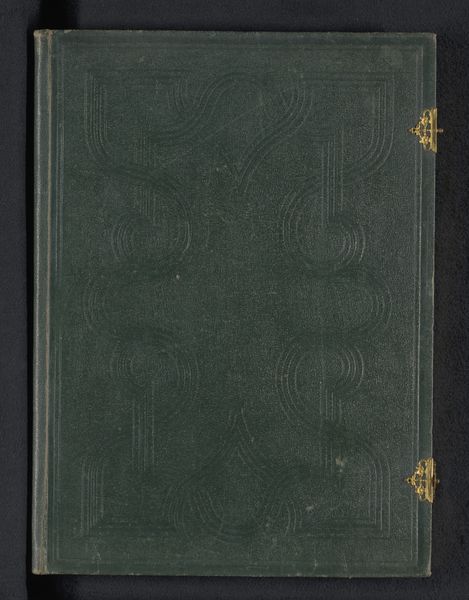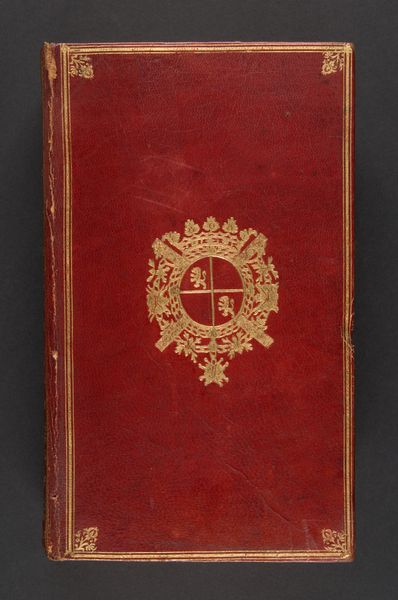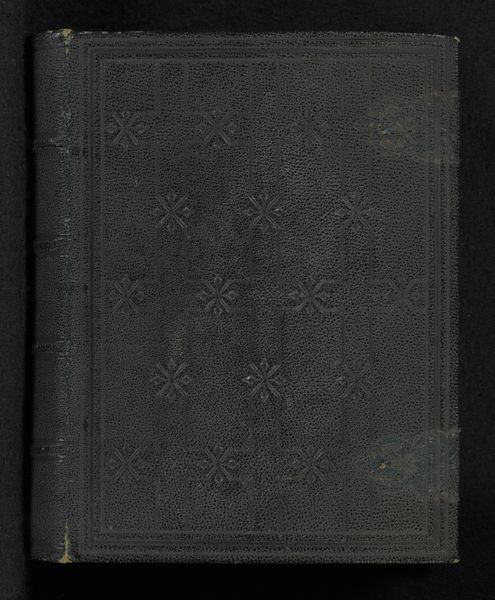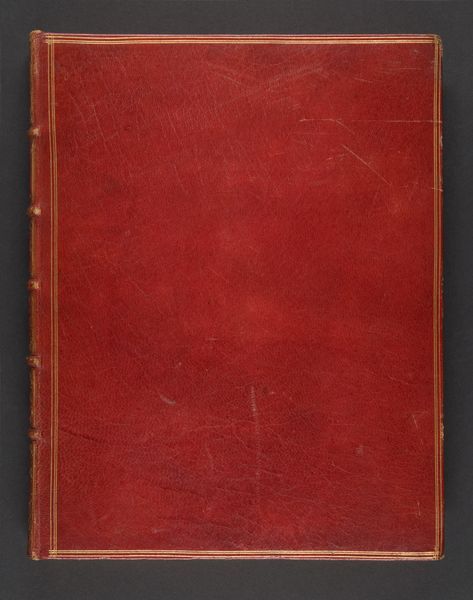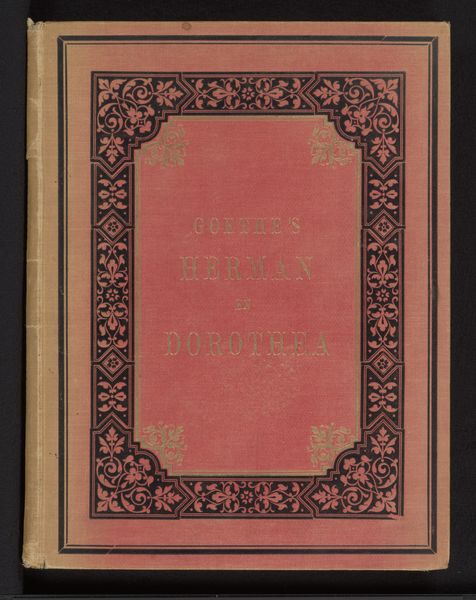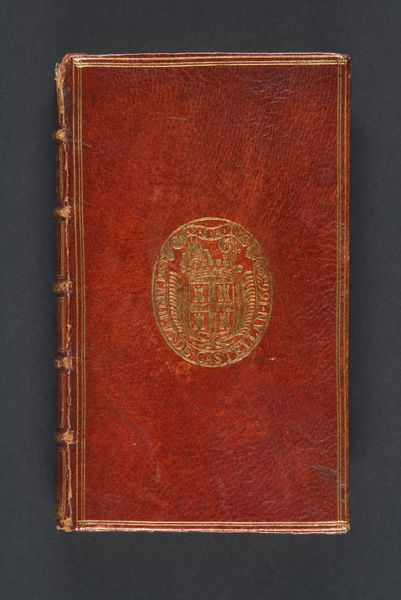
Les aventures de Télémaque, fils d'Ulysse par M. de Fénélon ; avec figures en taille-douce, dessinées par MM. Cochin et Moreau le jeune 1790
0:00
0:00
collage
#
collage
#
book
#
paper texture
#
geometric pattern
#
geometric
Dimensions: 2 volumes: illustrations (engravings); Height: 9 13/16 in. (25 cm)
Copyright: Public Domain
Editor: Here we have a look at the cover of "Les aventures de Télémaque", published in 1790. What strikes me most is the vivid red, contrasted by the gold leaf geometric ornamentation, especially the centered diamond shape. What's your perspective on this as an object, and beyond its visual presentation? Curator: This book, as a material object, immediately suggests certain social and economic conditions of its creation and consumption. Think about the sourcing of materials. Where did this red dye come from? What processes were involved in tanning and preparing the leather for the cover? The gold leaf, similarly, speaks to a complex system of extraction, production, and skilled labor. Editor: So, even the materials themselves are telling a story of industry and trade? Curator: Absolutely. Consider too, who owned such a book? What level of literacy, what kind of leisure, did it represent? Was it a status symbol, carefully displayed, or a well-loved object, often handled? How does its materiality reflect, perhaps even enforce, social hierarchies? Editor: That's fascinating. I hadn't thought about it in terms of consumption and social status so directly. Did the decoration process influence this consumption? Curator: Indeed. The intricate geometric patterns—the gold tooling—that’s highly skilled labor. How many hours did that take? Were those artisans valued, or were they simply anonymous laborers fulfilling a commission? We need to consider those unseen hands in the book's creation to fully understand its value. Editor: This makes me appreciate the object beyond just its aesthetic qualities. It reveals the layers of labor and resources that contributed to its existence. Curator: Exactly. This shifts our focus from simply admiring the surface to investigating the social context and means of production behind this seemingly simple, elegant object. A powerful reminder to consider the often-invisible networks of making that all artwork embodies.
Comments
No comments
Be the first to comment and join the conversation on the ultimate creative platform.

